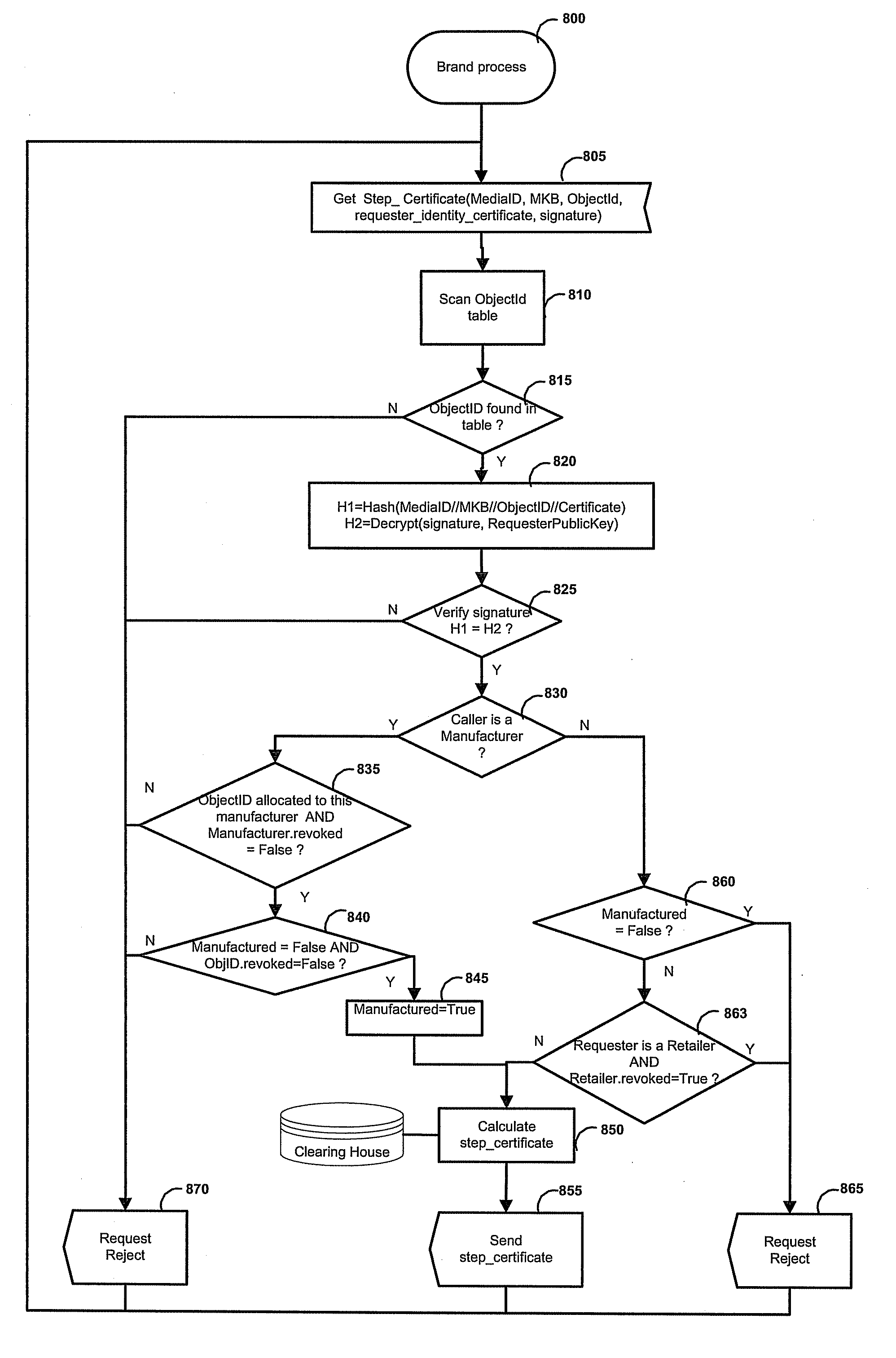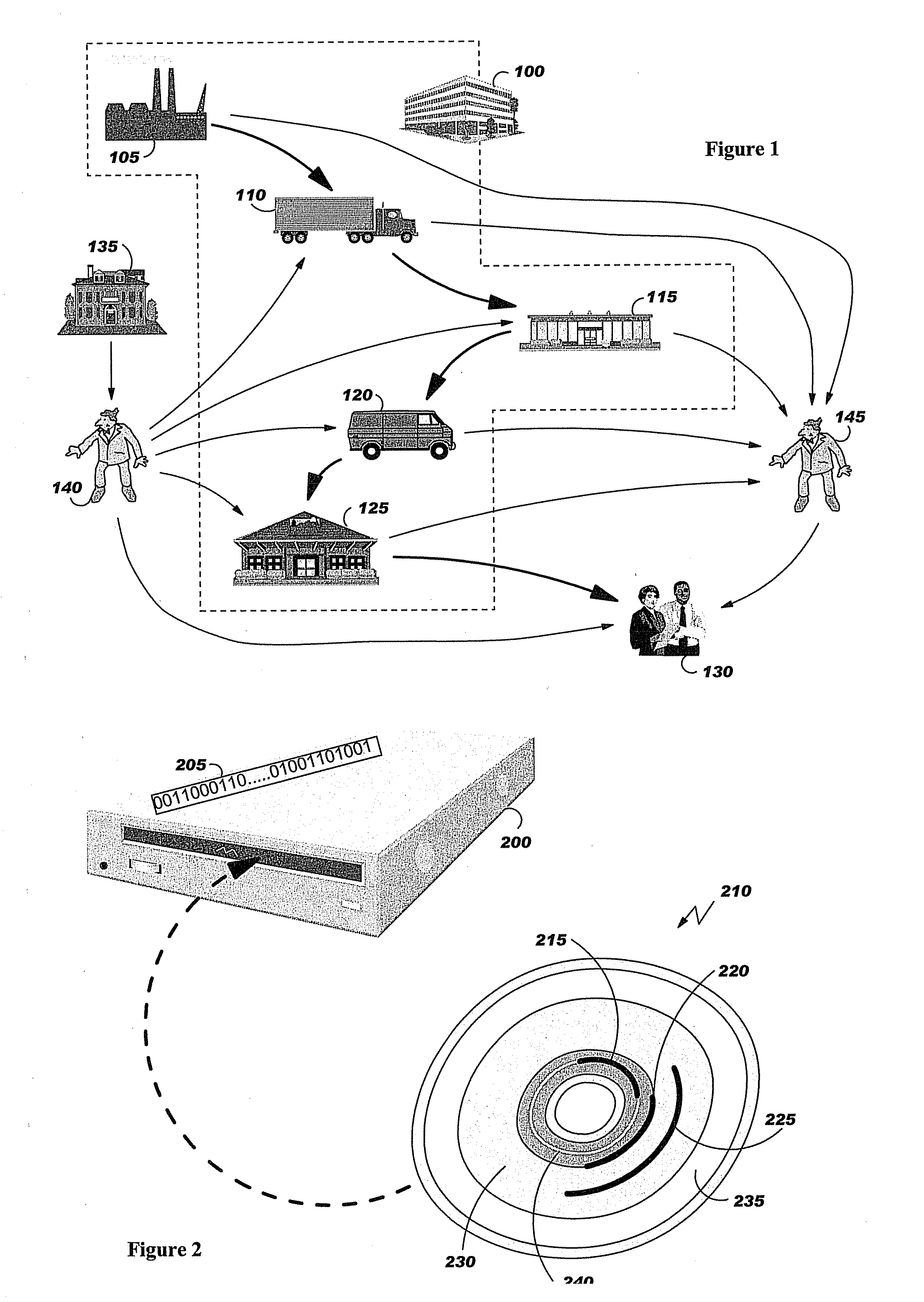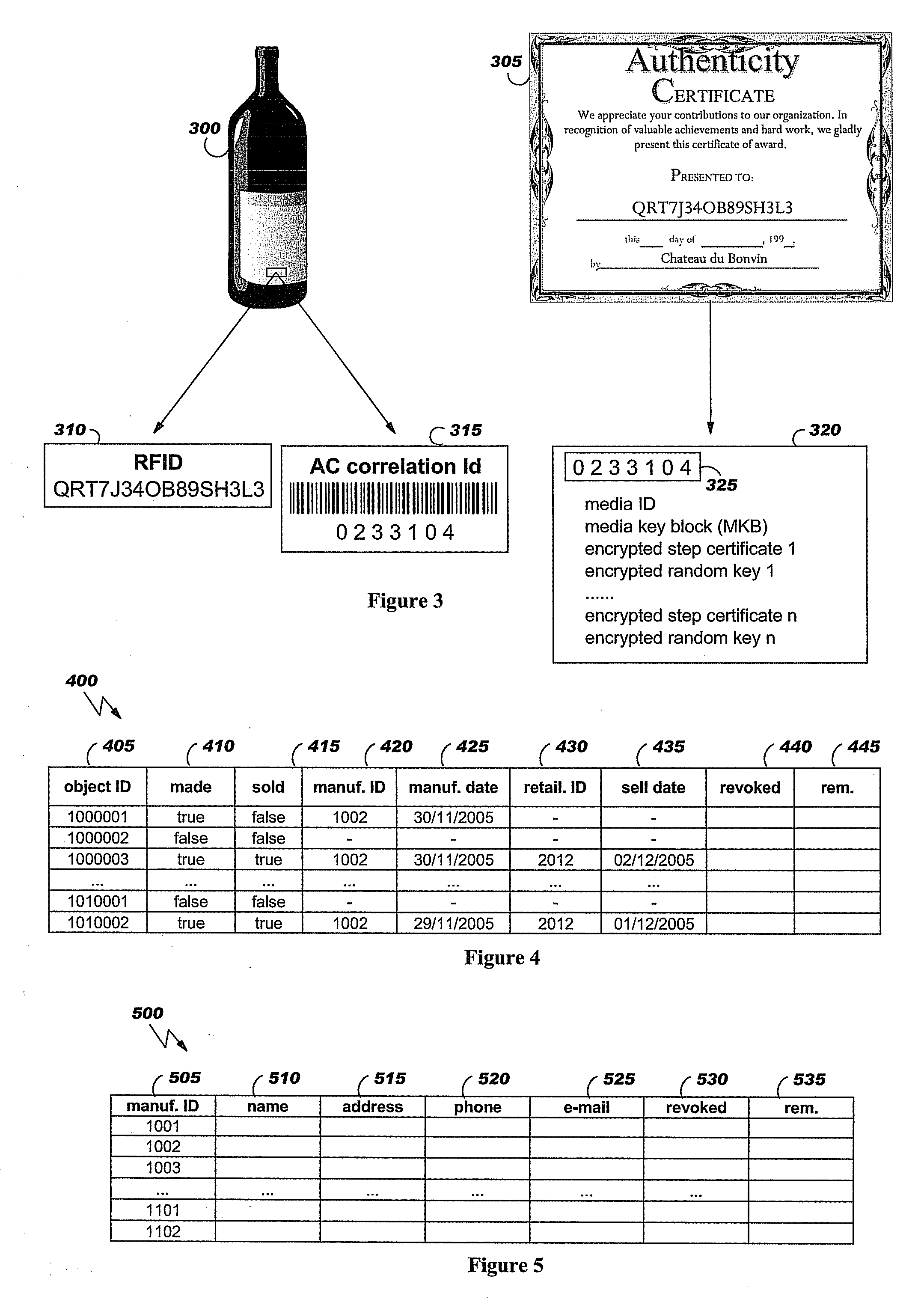[0046]Further advantages of the present invention will become apparent to the ones skilled in the art upon examination of the drawings and detailed description. It is intended that any additional advantages be incorporated herein.
[0047]FIG. 1 illustrates the simplified supply chain from a merchandise manufacturing to the merchandise selling, the
distribution chain of counterfeited objects, as well as the
distribution chain of stolen branded goods.
[0048]FIG. 2 shows a simplified illustrative example of a
DVD player device and media embedding CPRM features showing how CPRM technology operates.
[0049]FIG. 3 shows a branded object and its associated authenticity certificate.
[0050]FIG. 4 depicts a first one of the tables used by the originator brand company to manage marked objects and authenticity certificates. The table of FIG. 4 is used to
record the identifiers of the objects to authenticate, and their status.
[0051]FIG. 5 illustrates a second one of the tables used by the originator brand company to manage marked objects and authenticity certificates. The table of FIG. 5 is used to
record information relative to the manufacturers of objects to authenticate.
[0052]FIG. 6 shows a third one of the tables used by the originator brand company to manage marked objects and authenticity certificates. The table of FIG. 6 is used to
record information relative to the retailers of objects to authenticate.
[0053]FIG. 7 depicts an example of the process flow to create the step certificate of an authenticity certificate, the step certificate being requested by the manufacturer after having manufactured the objects to authenticate.
[0054]FIG. 8 is a
flow chart representing the brand company certificate delivery.
[0055]FIG. 9 is a
flow chart representing the behavior of the counterfeit detection
system.
[0056]FIG. 10 illustrates a
block diagram example of the apparatus for creating authenticity certificates and for detecting counterfeited or stolen objects.
[0057]According to the invention, an identification tag and an authenticity certificate are associated to the branded goods to be checked for detecting counterfeiting or theft. Both identification tag and authenticity certificate are generated at manufacturing time. The authenticity certificate is updated by the retailer in the presence of the customer. The authenticity certificate, based upon Content Protection for Recordable Media (CPRM) technology, is not duplicable nor forgeable. In a preferred embodiment, the identification tags comprise either a
Radio Frequency Identifier (RFID) tag or a bar code.
[0058]The authenticity certificate, stored on a specific media, can not be duplicated thanks to CPRM technology. The authenticity certificate can be seen as a set of step certificates, maintained by the brand company to certify that brand good has been manufactured, transported, sold, or the like, by an authorised party i.e., to authenticated each step of the supply chain, or selected steps, of the brand good life cycle from the manufacturing to its selling. An authenticity certificate may comprise as many step certificates such as manufacturer certificate or retailer certificate, as required. The authenticity certificate further comprises general information such as media identifier and media key block.
[0059]The method and
system of the invention is adapted to detect counterfeit or stolen merchandise. It is based upon,
[0060]a merchandise identifier which is a tag included by the manufacturer in the object for which the authenticity has to be guaranteed. This tag may be an optical readable tag like bar code, a
Radio Frequency IDentifier (RFID), or any other tag readable by wired or
wireless means;
[0061]an Authenticity
Certificate (AC) generated at manufacturing time and updated at least by the retailer in the presence of the customer. Information's recorded on this certificate are generated by the brand company, thanks to a clearing house that generates an encrypted title key for each step certificate. Authenticity certificate is not duplicable nor forgeable. It is based on a CPRM like technology allowing the data to be encrypted with a random key, referred to as title key, such title key being encrypted with the hashing of a
unique key called media key concatenated to the media identifier. Authenticity certificate contains several step certificates with their associated encrypted title keys. It must contain at least a step certificate for the manufacturer and an other one for the retailer to authenticate associated good and to certify it has been properly sold. Step certificate contains,
[0062]the result of the hashing of the
manufactured object identifier (allowing the object identifier to be unreadable and undeterminable, and to prevent the creation of counterfeited object with an object identifier corresponding to a stolen authenticity certificate);
[0063]the requester identity certificate e.g., manufacturer or retailer;
[0064]the requester type e.g., “manufacturer”, “retailer”, or any other party involved in the supply chain;
[0063]the requester identity certificate e.g., manufacturer or retailer;
[0066]other information such as manufacturing and sale date may be recorded for
traceability purpose;
[0067]the signature which is the result of the hashing of all the previous data encrypted with the brand company private key.
 Login to View More
Login to View More  Login to View More
Login to View More 


